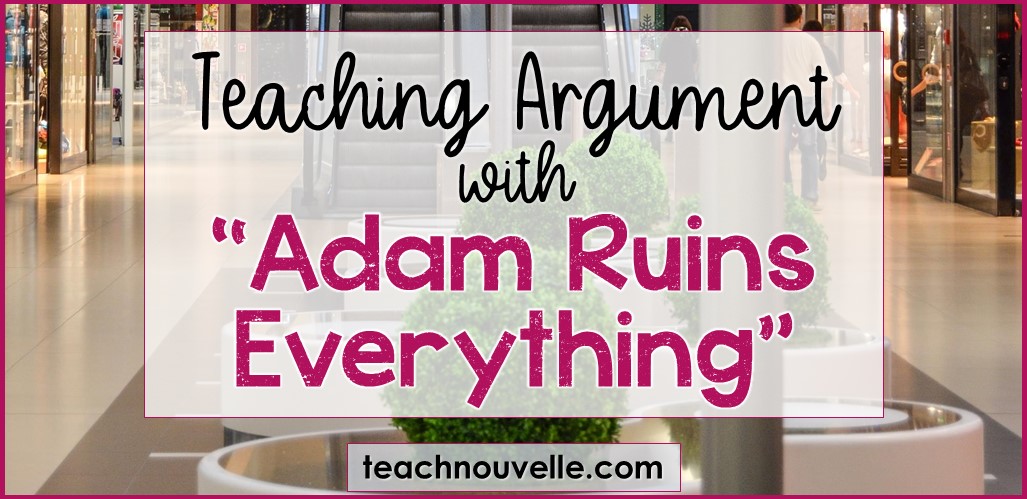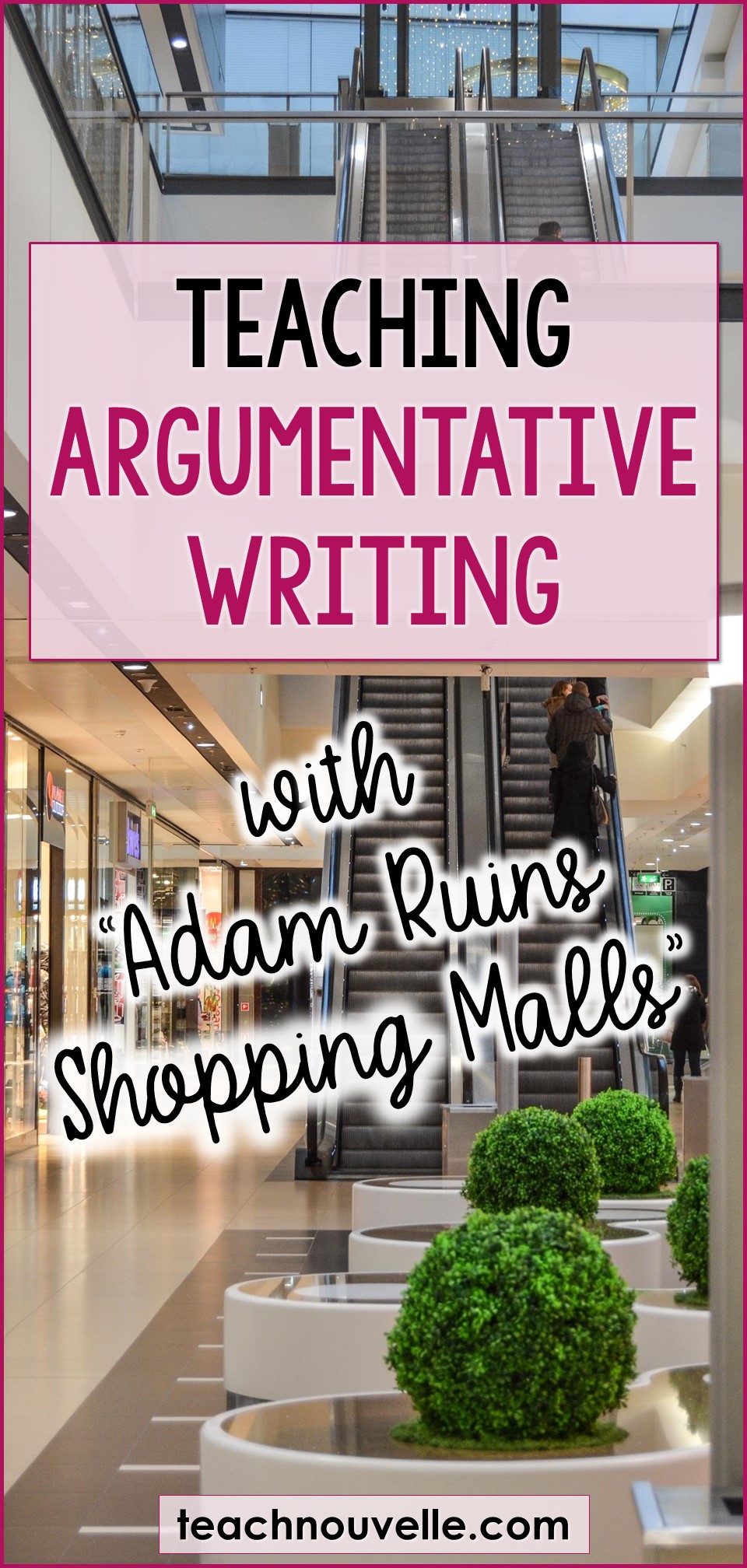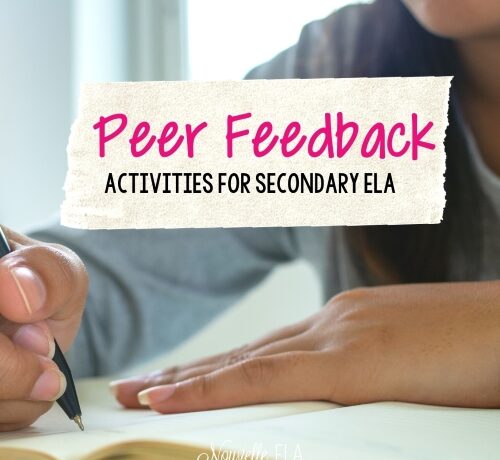So, you’re teaching argumentative writing again, and you’re looking for something to spice up your unit. I have been there! And I have an idea to share!
Even though they LOVE to argue, teens aren’t always excited to write it down. Their eyes glaze over when you say the word “rhetoric”. I’ve talked before about teaching media literacy and even linked to my free Rhetoric Sketch & Learn activity, but what happens after that?
Students learn in all sorts of different ways, and one of those ways is visually. A visual lesson can help students see how to craft their argument and moreover, how they can integrate research into a meaningful product.
What about integrating some pop culture? I’ve talked before about using TV in the ELA classroom, and this is another example of the perfect opportunity to bring in an episode. I love the show Adam Ruins Everything which is an “informational comedy” show hosted by Adam Conover. It can now be found on Netflix and it’s 20-minute runtime makes it a perfect model “text” for your classroom.
Adam Ruins Everything
Adam Ruins Everything does a great job of presenting arguments and their rebuttals, as well as showing simple ways that researched sources can be smoothly integrated into those arguments. The show presents this process as Adam having conversations with the other characters on the show. He presents his argument that should supposedly prove wrong their misconceptions about a topic (hygiene, airport security, cars, etc.). His persona is an annoying know-it-all that ruins everyone’s good time, but in a totally well-meaning way. As Adam speaks, the show provides visuals that include sourced research and statistics that are engaging and interesting. Most of the time, Adam successfully changes the mind of the characters he’s interacting with. A couple of times, they manage to change HIS mind!
I also love that each episode is divided into three shorter segments of 5-7 minutes. This is actually perfect for the classroom because it can teach your students about focusing on very specific angles of a topic. Moreover, many argumentative speech assignments are 5-7 minutes anyway, so students have a vision of what could be achievable in that time.
The show is a great model for teaching argumentative writing. While I don’t expect you to have your students try and imitate the show’s process exactly, it can be a good point of interest for them to brainstorm and think of ways they can incorporate their own audio, visual, or other multi-media demonstrations into their own research. By watching the show, they can see how they, too, can make presenting a researched argument engaging and fun. If you did want to lean in completely, you could have students work in groups to “ruin” a topic!
Here’s an episode suggestion!
A great episode for classroom use is “Adam Ruins Shopping Malls”. Most episodes have a similar setup: Adam is conversing with a friend who happens to mention their preconceived notions about a particular topic. Oh, the horror! At this point, Adam corrects them and delves into his evidence (the sources). I love that this episode is so visual! It even provides on-screen text citations of the sources. Adam turns to credible sources like a fashion industry professor and professionals in the fields related to the topic, statistics and fact-based evidence, as well as on-record quotes from individuals about the corporations he argues against that support his own argument.
You can really get creative with how you teach this lesson to your students, but here are some foundational questions that will get your students thinking!
Shaping their Arguments:
- How does Adam incorporate sources? Have students get in small groups, and assign each group a source that Adam uses in the episode. The students can look up these sources and think about how they could find similar quality sources for their own topics of research. Then have them brainstorm their own unique ways of integrating sources into their arguments via similar methods media integration.
- What expert testimony could students incorporate? Adam brings in experts to speak on camera, but students can integrate quotes into research papers and even short video clips of experts on tape into presentations.
- What materials would aid students’ arguments? Video? Audio? Or should they use some other media source to get their point across?
Encourage them to think outside the box! There’s also no reason that their sources for an argumentative research paper and a speech have to be exactly the same. Part of the fun of research is figuring out how to innovate and best use your medium to win your argument!
Even though I hit first on flashy things like visuals and expert testimony, language is still a large part of the argument-making process. While the media is helpful in aiding the argument and convincing the listener, it should be thought of as just that – an aid – rather than a crutch. Adam still uses argumentative techniques in his language to get verbally convey the point that his sources contribute to.
Structuring Claims
- How does Adam convince others on the show that they are wrong about the topic they seemed to think they knew all about before?
- What concrete examples does Adam use to support his claims?
- How does he use counterarguments – appeal to the other characters’ beliefs – in order to make rebuttals and reinforce his points?
You can also have a class discussion while the episode is being played where students can ask you to pause the video whenever they notice Adam making a point that feels essential to his argument. This is a good practice technique for identifying argumentative language, and further, can help students to think about how they will make their own. Again, pose questions that encourage the students to use this episode as a model text:
The Language of Argument:
- What kinds of terms does Adam use to make his points?
- When does Adam identify his transitions? (“however”, “moreover”, “on the other hand”, etc.)
- How does Adam paraphrase a source’s ideas?
I love this show, and I wanted to share it with you! These are just a few ideas to get your students thinking about argument and research in a new light. If you want to take this type of lesson one step further, you could even assign the students with their own commonly-held ideas to argue about and ask them to essentially “ruin” the idea (make an argument against it) in the way that Adam does on his show.
Here’s just one way to make teaching argumentative writing more fun this year! What ways do you spice up your argument unit?
Happy teaching!






1 Comment
Kar
September 17, 2019 at 4:07 pmArgument writing